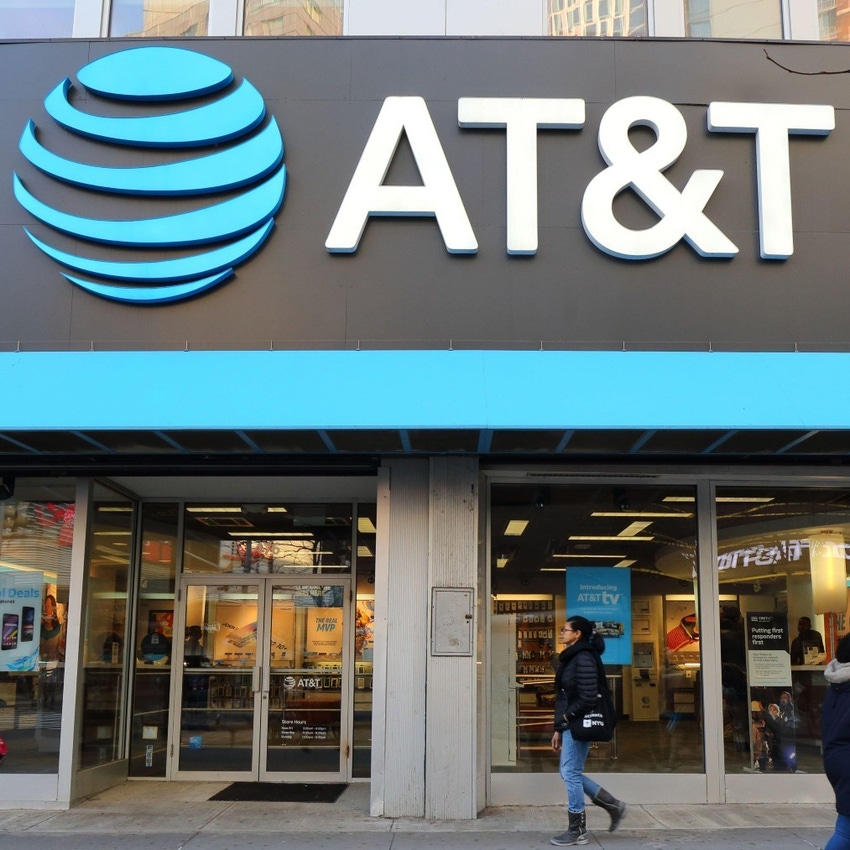How serious is AT&T's FWA ambition?
If AT&T managed to convert 60% of its DSL customers onto its 5G FWA offering by 2025, it would count a total of 3.6 million customers. That would put it in the same league as T-Mobile and Verizon.

AT&T has finally joined Verizon and T-Mobile in offering fixed wireless Internet services over its speedy midband 5G network. However, the extent of the operator's plans remains unclear.
Financial analysts have mixed opinions about the potential for AT&T's 5G fixed wireless access (FWA) services. Some believe the company's entry into the market will only affect a small portion of the operator's existing customer base. Others believe AT&T's efforts could ultimately impact some of the nation's cable companies.
AT&T officials have offered little guidance. But there are some indications that the company's FWA business could play in the same league with T-Mobile and Verizon.
Analysts estimate that AT&T currently counts around 6 million digital subscriber line (DSL) customers served via copper. The company is working to transition an unknown portion of them onto its new FWA product.
Figure 1:  AT&T's website touts its new 'All-Fi Hub' FWA receiver.
AT&T's website touts its new 'All-Fi Hub' FWA receiver.
(Source: AT&T screenshot)
If AT&T managed to convert 60% of its DSL customers onto its 5G FWA offering by 2025, it would count a total of 3.6 million FWA customers. That would certainly put it within reach of its two main rivals: T-Mobile expects to have at least 7 million FWA customers by 2025, and Verizon expects to have at least 4 million by 2025.
Setting the groundwork
Like T-Mobile and Verizon, AT&T's new FWA strategy stems from the billions of dollars it has invested into midband spectrum for its 5G network. That spectrum, coupled with advanced wireless networking technologies, promises to support in-home Internet traffic levels, at least in the short term.
However, it's still not clear how AT&T plans to play in the FWA market. T-Mobile and Verizon have been outspoken proponents of FWA, but AT&T officials continue to describe the technology as unsuitable for a broad commercial rollout.
"We are in the process of scaling up so that we make sure that we do it the right way. And we are going to use it where we think we can offer a customer a better set of services than what they currently have," AT&T CEO John Stankey explained during his company's recent earnings call.
Details of AT&T's new FWA "copper catch" product showed up recently on AT&T's website, as reported by Light Reading. The product – dubbed "Internet Air" – is intended for DSL customers who won't receive a fiber alternative. It costs $55 per month, offers "typical download speeds" between 40 Mbit/s and 140 Mbit/s, and does not carry any overage charges.
Users can install the service themselves via the new "All-Fi Hub" receiver and can test the offering for free for a week. AT&T officials declined to provide information about the offering beyond what's on the company's new website.
Some FCC documents appear to indicate that Wistron NeWeb is the manufacturer behind the AT&T All-Fi Hub.
AT&T is no stranger to the FWA game. The operator introduced a fixed wireless product on its 4G network using 3.5GHz CBRS spectrum in 2019, in part to meet Connect America Fund Phase II buildout requirements. According to FierceWireless, the company counted around 500,000 FWA customers on that network last year.
Mixed opinions
Analysts' reactions to AT&T's new Internet Air FWA service have been mixed.
"We imagine that the $55 reported price is just a starting point, with bundled offerings likely to follow for AT&T wireless customers (an approach that has worked well with AT&T Fiber and other fixed wireless products at T-Mobile and Verizon)," wrote the financial analysts with Wells Fargo in a recent note to investors. "It will help address some of the 'low-hanging' fruit DSL customers that have steadily been migrating to cable or other fixed wireless alternatives. And given AT&T is not planning to launch it on a nationwide basis, it should have very attractive incremental returns."
Others see a potentially bigger impact if AT&T offers FWA more widely.
The financial analysts at Wolfe Research went so far as to say that AT&T's FWA efforts could "contribute ... to cable's broadband struggles."
The financial analysts at New Street Research agreed that a broad FWA rollout by AT&T could "push cable's recovery out by a couple of quarters." They pointed to the massive success of 5G FWA during 2022, which contributed to a historic slowdown in the core home Internet businesses of Comcast, Charter Communications and other US cable companies last year.
However, the New Street Analysts concluded: "We suspect AT&T's impact will be small, if they do make a push into FWA, given spectrum limitations and their clear reservations about the product."
Different from Verizon
The analysts at Raymond James cautioned that AT&T's FWA effort should not be viewed through the same lens as Verizon's.
"Verizon's initiative stands in contrast to AT&T, who has chosen a different strategy favoring fiber upgrades and build-outs over FWA. Neither strategy seems particularly advantageous; rather, they reflect the idiosyncrasies of each operator's existing infrastructure footprint," they wrote in a recent note to investors.
"AT&T has a substantial legacy copper/DSL footprint, which provides low-hanging fruit for upgrades to fiber; whereas Verizon already invested in fiber years ago with FiOS, FWA is a logical area to focus resources to drive incremental growth," the Raymond James analysts added.
Related posts:
— Mike Dano, Editorial Director, 5G & Mobile Strategies, Light Reading | @mikeddano
About the Author(s)
You May Also Like











